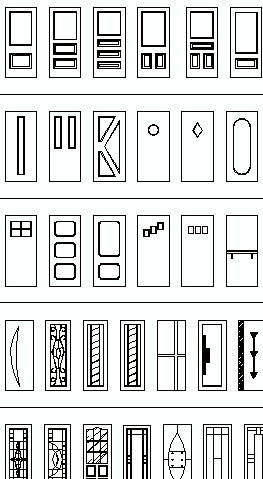
Wardrobe Details free CAD drawings Download these free CAD drawings of wardrobe furniture in side view and plan view. Wardrobe Details free CAD drawings Download these free CAD drawings of wardrobe furniture in side view and plan view.
The.dwg File Format The a file extension.dwg is used to identify a format for generic CAD (computer-aided design) drawing files. The most popular CAD Program by far, is Autodesk's AutoCAD. Autodesk created.dwg in 1982 for use in its first version of AutoCAD software. DWG is a trademark owned by Autodesk, as is the name 'AutoCad'. Note:The use of DWG and AutoCad (both trademarks of AutoDesk) on this website in is soley for the purposes of recognizing the CAD standard set by AutoDesk and does not imply the endorsement of AutoDesk or AutoDesk's ownership for the material on this web site. Cad libraries are organized collections of dwg and supporting files.
The primary advantage of using a CAD library is that it is more efficient and effective. By making it unnecessary to begin the drawing from scratch, the CAD library saves time and money. A slightly less obvious benefit is that these collections allow designers, such as engineers, architects etc., to quickly implement routine or standard items in their design. This allows them to focus creative energy on new items specific to their unique project. CAD Blocks CAD blocks are named groups of objects, sometimes called CAD Symbols, that act as a single object in your drawing. CAD blocks are used to create repeated content such as drawing symbols, common components, and standard details.
Blocks help you save time, maintain consistency, and reduce file size by reusing and sharing content rather than re-drawing it every time you need it. Block libraries are essentially DWG Libraries for blocks. The terms 'Block Library' and 'Symbol Library' basically mean the same thing. About our Libraries The consists over 300 sample dwg files. (If you are looking specifically for free cad blocks, the free cad blocks are in a directory called Symbols--DWG.) Our consists of over 9200 dwg files (CAD blocks, Cad Details etc.) for the fields of Archetechture, Engineering and Construction.
The files (divided into the major categories of commercial and residential) are organized hierachically into over 150 categories so you can drill down to what you need quickly. Our contains 5,500 2D.dwg format CAD construction details for both residential and commercial projects. Manual na becker audio 30 be 4705. All the elements in the drawings are composed of lines only (there are no hatches or embedded dimensions) and the drawings are fully editable so that you can customize them as if you had drawn them yourself.
These highly detailed drawings cover 141 categories. They also are organized hierarchically for easy drill down. The contains more than 100,000+ useful and ready to use dwg cad drawing files in 71 categories.
These libraries are available for Instant Download or on DVD. For a complete listing of our entire collection. CAD stands for 'Computer Aided Design'. Generically, it refers to the process of using computers, rather than the traditional drafting board, to create and maintain technical drawings. Back to the Drawing Board It's important to remember that the 'A' stands for 'Aided' not 'Accomplished'. The design itself happens in the mind of the engineer, architect, or designer.
The drawings, printouts, and pdf files created and edited by this software simply record the thought process of the designer. It is just a tool, not the actual designer. It replaces literally hundreds of years of the more traditional tools such as pencil, paper, compass, protractor and ruler. Computer Aided Desgin Software By now 'Computer Aided' design is the rule rather than the exception.
It's important to remember that it's not always faster or more productive to create designs with a computer rather than with pencil and paper. The advantage comes when it's time to modfiy the design and reuse standard components. Desiging 'the old way' often required that even small changes to a design would result in new drawing be created from scratch, requiring many expensive hours of rework. To make matters even more inefficent, much of each type of drawing was spent creating (from scratch) standard components or parts. This new type of software, which was very expensive by today's standards, was well worth the price due to the great reduction in time for rework and for the creation of standard components, details and symbols. Libraries of files, such as the ones we provide, are the reason Computer Aided Design software became so prevalent.